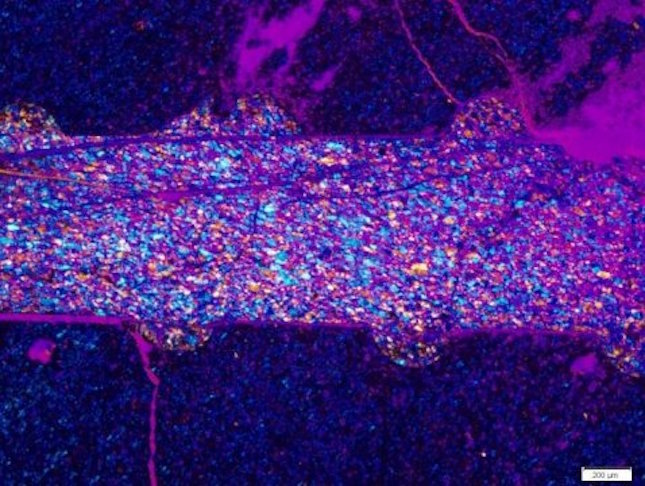
Subduction zones are some of the most seismically active areas on earth. Earthquakes in these spots that occur close to the surface can be devastating, like the one that struck Japan in 2011 triggering the Fukushima nuclear disaster. But quakes also occur commonly in the subducting crust as it pushes deep below the surface -- at depths between 70 and 300 kilometers. These quakes, known as intermediate depth earthquakes, tend to be less damaging, but can still rattle buildings.
Intermediate depth quakes have long been something of a mystery to geologists.
"They're enigmatic because the pressures are so high at that depth that the normal process of frictional sliding associated with earthquakes is inhibited," said Greg Hirth, professor of earth, environmental, and planetary sciences at Brown. "The forces required to get things to slip just aren't there."
But through a series of lab experiments, Hirth and postdoctoral researcher Keishi Okazaki have shown that as water escapes from a mineral called lawsonite at high temperatures and pressures, the mineral becomes prone to the kind of brittle failure required to trigger an earthquake.
"Keishi's experiments were basically the first tests at conditions appropriate for where these earthquakes actually happen in the earth," Hirth said. "They're really the first to show strong evidence for this dehydration embrittlement."
The work will be published on February 4, 2016 in the journal Nature.
The experiments were done in what's known as a Grigg's apparatus. Okazaki placed samples of lawsonite in a cylinder and heated it up through the range of temperatures where water becomes unstable in lawsonite at high pressures. A piston then increased the pressure until the mineral began to deform. A tiny seismometer fixed to the apparatus detected sudden cracking in the lawsonite, a signal consistent with brittle failure.
Okazaki performed similar experiments using a different mineral, antigorite, which had been previously implicated as contributing to intermediate depth seismicity. In contrast to lawsonite, the antigorite failed more gradually -- squishing rather than cracking -- suggesting that antigorite does not play a role in these quakes.
"That's one of the cool things about this," Hirth said. "For 50 years everyone has assumed this is a process related to antigorite, despite the fact that there wasn't much evidence for it. Now we have good experimental evidence of this dehydration process involving lawsonite."
If lawsonite is indeed responsible for intermediate depth earthquakes, it would explain why such quakes are common in some subduction zones and not others. The formation of lawsonite requires high pressures and low temperatures. It is found in so-called "cold" subduction zones in which the suducting crust is older and therefore cooler in temperature. One such cold zone is found in northwest Japan. But conditions in "hot" subduction zones, like the Cascadia subduction zone off the coast of Washington state, aren't conducive to the formation of lawsonite.
"In hot subduction zones, we have very few earthquakes in the subducting crust because we have no lawsonite," Okazaki said. "But in cold subduction zones, we have lawsonite and we get these earthquakes."
Ultimately, Hirth says research like this might help scientists to better understand why earthquakes happen at different places under different conditions.
"Trying to put into the context of all earthquakes how these processes are working might be important not just for understanding these strange types of earthquakes, but all earthquakes," he said. "We don't really understand a lot of the earthquake cycle. Predictability is the ultimate goal, but we're still at the stage of thinking about what's the recipe for different kinds of earthquakes. This appears to be one of those recipes."
Journal Reference:
- Keishi Okazaki, Greg Hirth. Dehydration of lawsonite could directly trigger earthquakes in subducting oceanic crust. Nature, 2016; 530 (7588): 8



Reader Comments
to our Newsletter